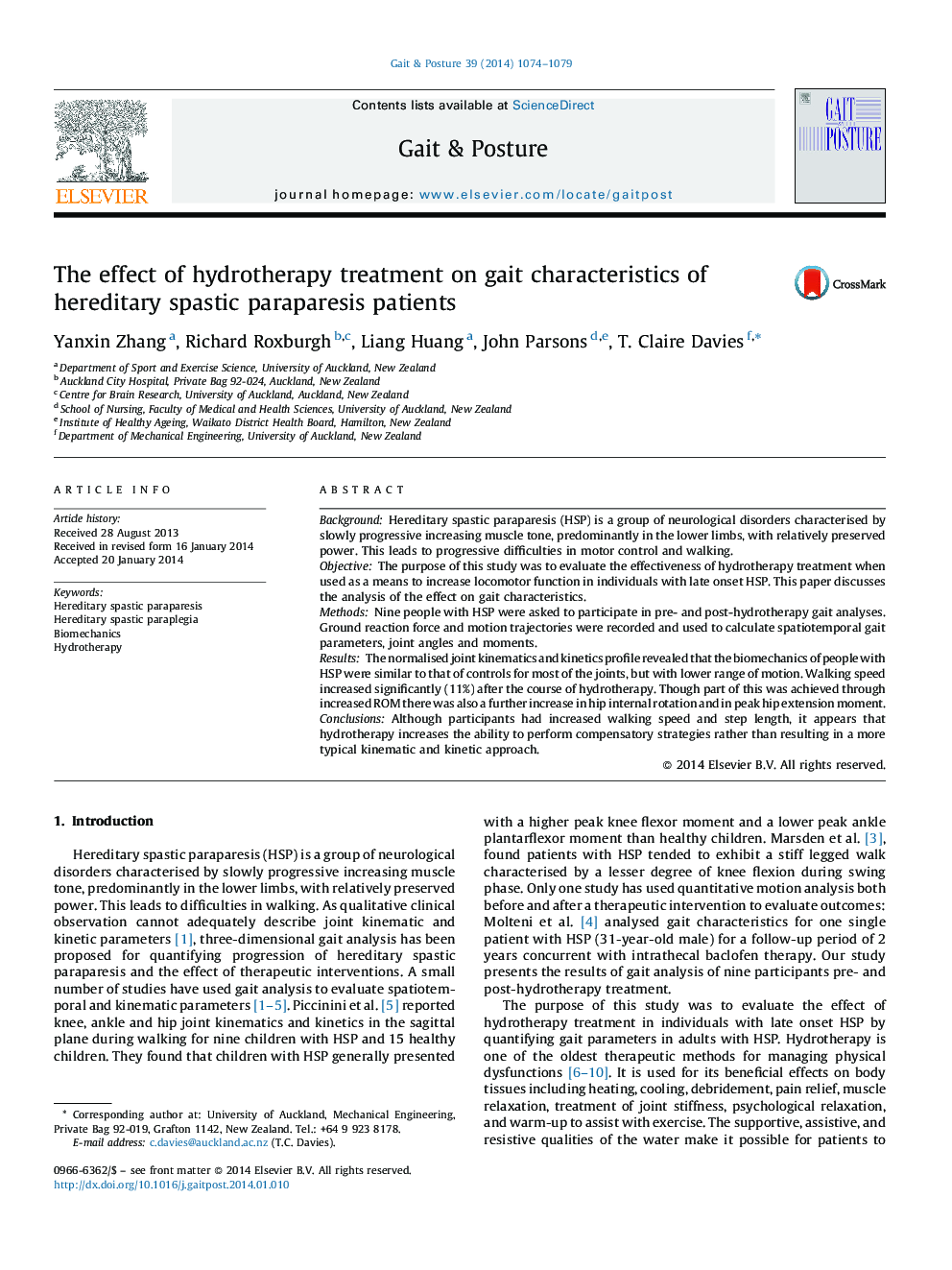| Article ID | Journal | Published Year | Pages | File Type |
|---|---|---|---|---|
| 6206301 | Gait & Posture | 2014 | 6 Pages |
â¢Participants identified genetically as having hereditary spastic paraparesis.â¢Baseline kinematics and kinetics collected.â¢Ten weeks of hydrotherapy.â¢Post-intervention analysis.â¢Increased walking speed, but maintained compensatory strategies.
BackgroundHereditary spastic paraparesis (HSP) is a group of neurological disorders characterised by slowly progressive increasing muscle tone, predominantly in the lower limbs, with relatively preserved power. This leads to progressive difficulties in motor control and walking.ObjectiveThe purpose of this study was to evaluate the effectiveness of hydrotherapy treatment when used as a means to increase locomotor function in individuals with late onset HSP. This paper discusses the analysis of the effect on gait characteristics.MethodsNine people with HSP were asked to participate in pre- and post-hydrotherapy gait analyses. Ground reaction force and motion trajectories were recorded and used to calculate spatiotemporal gait parameters, joint angles and moments.ResultsThe normalised joint kinematics and kinetics profile revealed that the biomechanics of people with HSP were similar to that of controls for most of the joints, but with lower range of motion. Walking speed increased significantly (11%) after the course of hydrotherapy. Though part of this was achieved through increased ROM there was also a further increase in hip internal rotation and in peak hip extension moment.ConclusionsAlthough participants had increased walking speed and step length, it appears that hydrotherapy increases the ability to perform compensatory strategies rather than resulting in a more typical kinematic and kinetic approach.
